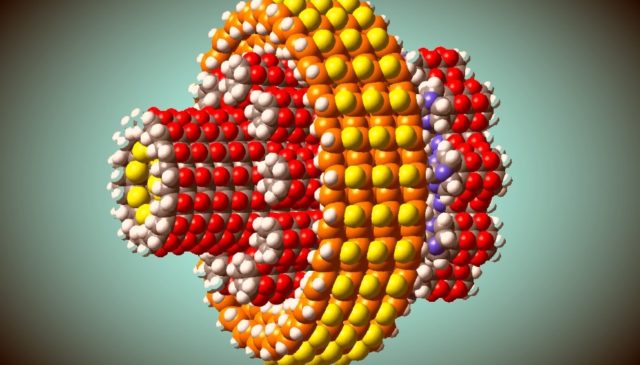
Nanotechnology has been a powerful source of innovation in the cannabis industry and has removed one of the greatest barriers to the realized potential of cannabinoids – their hydrophobic nature and their low bioavailability.
An overview of the advances in this niche was published in the journal Advances in lipid research and highlights nanotechnology in relation to food and nanoemulsions.
Advantages of nanoemulsions
The two most common types of nanoemulsions are oil-in-water (O / W) and water-in-oil (W / O). O / W nanoemulsions consist of small oil droplets that are dispersed in water, while W / O nanoemulsions have the reverse structure, with small water droplets dispersed in oil.[1] Nanoemulsions are in the middle of the emulsion size spectrum between emulsions and microemulsions and as such form a happy medium.
From a kinetic point of view, because of their smaller size, nanoemulsions are much more stable than emulsions, which “reduces the tendency towards gravitational separation”.[1] This quality extends the shelf life. The smaller the droplets, the faster and more completely they are digested in the gastrointestinal tract, which increases and decreases the onset time.
Conversely, their larger size offers several advantages over microemulsions. They can be formulated from a much wider range of ingredients, and most importantly from natural emulsifiers, as opposed to the synthetic surfactants which are a driving force behind microemulsions.
Approaches to the production of nanoemulsions
There are two main approaches to making nanoemulsions: low-energy and high-energy.
Low energy processes rely on a spontaneous emulsion triggered by a specific change in the composition or temperature of a system containing oil, water and surfactant.
In contrast, high-energy processes use intense mechanical forces to set the emulsion in motion.
Nanoemulsions based on natural ingredients
This is an increasing demand and an increasing scientific interest in nanoemulsions that are made entirely from natural food ingredients and especially vegetable rather than animal based, such as oils, phospholipids, proteins, polysaccharides, biosurfactants or saponins from vegetable materials.
This is very difficult with low energy methods because these natural ingredients alone are not soluble enough to spontaneously emulsify. However, high energy methods work with a wide variety of emulsifiers.
“Typically, vegetable-based emulsifiers must be highly water-soluble, surface-active, rapidly adsorbing, and present in a concentration high enough to cover all of the oil droplet surfaces formed during homogenization,” the review authors say.[1] “Nanoemulsions are highly effective in increasing the bioavailability and bioactivity of orally administered hydrophobic bioactive agents.”
More research in this area can lead to products with a higher bioavailability of cannabinoids and thus a faster noticeable effect.
Credit: Wikipedia
Image source: https://upload.wikimedia.org/wikipedia/commons/e/ec/Nanob.jpg
reference
- McClements, DJ. Advances in Edible Nanoemulsions: Digestion, Bioavailability, and Potential Toxicity. Advances in Lipid Research. 2021; 81: 101081.
